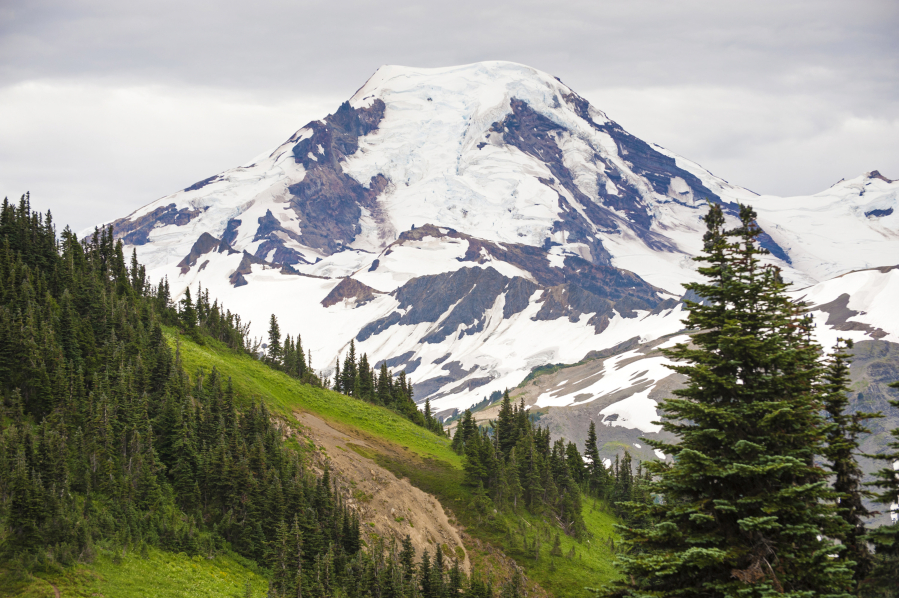BEND, Ore. — Greg M. Peters is a Missoula, Mont.-based writer and editor, and the author of the newly published book “Our National Forests: Stories from America’s most Important Public Lands.”
Peters is the former director of communications at the National Forest Foundation and was the editor of its magazine, Your National Forests. He weaves history, expertise and personal experience in “Our National Forests.”
“The Camping Life” author Brendan Leonard described it as bringing to life American history through the prism of its national forests and “an inspiring reminder of the incredible resource that is our public lands.”
Peters, whose book includes more than 150 photographs also telling the story of the U.S. National Forest System, recently engaged in an email interview with The Bulletin. (Some answers have been trimmed for length.)
Can you tell readers about your national forest background, and what led to your writing “Our National Forests”?
Growing up in Maine, I knew very little about our national forests. When I moved to Alaska after college, I ended up living in an off-the-grid cabin on a private inholding on the Chugach National Forest in Alaska. That experience helped me learn a bit more about our national forests, but it wasn’t until I was fortunate to land a job at the National Forest Foundation in 2010 that I really came to understand the system. I worked for the NFF until 2018 and ended up as the communications director, where I wrote a lot about national forests and edited the organization’s semi-annual magazine.
While at the NFF, an editor from Timber Press named Will McKay reached out to the organization to inquire if we wanted to help Timber Press produce a book about national forests. As the communications director, I ended up talking with Will and casually mentioned that I’d love to write a book like that. Will was open to the idea, asked me to develop a formal proposal, and after finding some contract work that could help pay my bills, I left the NFF at the end of 2018 and started working on the book.
Who do you believe is or should be the audience for the book?
I wrote the book for folks who are interested in learning more about this particular set of public lands. While at the NFF, I learned how little the average American knows about the national forest system. Even many folks who live near forests likely don’t understand their history, their role in America’s amazing public lands heritage, or how they’re managed. The book isn’t a history of the forests or the Forest Service, though there is a fair bit of history in it. It’s a collection of narrative, nonfiction “stories” that weave together national forest history, important figures, current and past policy, and conservation concepts as they relate to topics like wildlife, wildfire, reforestation, recreation, and restoration. Each chapter can be read individually and, hopefully, each provides context and information about that topic without getting too bogged down in minutiae. To be honest, it’s probably not a great book for folks completely unfamiliar with public lands. It’s aimed at people who want to know more about the national forests and how this set of public lands deals with things like recreation, wildlife habitat, or diversity, equity and inclusion.
What were some of the most interesting or surprising things you learned researching the book?
I was surprised by the long history of restoration that the Forest Service has and that our national forests represent. The creation of the first forest reserves was a proactive effort to prevent the land abuses that had occurred in the East and Midwest from happening to Western forests. Those same Eastern and Midwestern forests were brought into the system for the express purpose of restoration. They had been so damaged by logging practices at the time that water supplies were polluted, floods were wiping out towns, and worse. The national grasslands is restored lands as well.
Who have been some of history’s biggest champions of our national forests?
Early on, Teddy Roosevelt and Gifford Pinchot are generally considered two of the most important champions. They were friends and worked closely together to bring hundreds of millions of acres of land into the public estate. Everyone knows Roosevelt, but Pinchot was the first chief of the U.S. Forest Service, helped found the Yale School of Forestry (the first forestry school in the U.S.), and is generally credited with popularizing the concept of “conservation” that still pervades how our national forests are managed.
Who or what is the biggest threat to forests?
Obviously climate change is the biggest. It’s influencing everything from wildfires to wildlife to recreation. Beyond that, apathy and disengagement are big threats. If folks don’t know about these lands and participate in the public processes that inform how they’re managed, other forces will. In certain places, irresponsible recreation is a big threat. The Forest Service isn’t the recreation police, they don’t have the staff (or the desire, frankly) to educate people how to recreate responsibly. Recreation groups and other stakeholders need to be doing a better job of reaching new participants in outdoor recreation and educating them on how to enjoy public lands without degrading them for those who follow.
What’s something you wish interviewers would ask about you or the book and never do?
No one has asked which of the photographs in the book is my favorite. It’s a tough call, but I have to say I really like the historical photos scattered throughout the book. In particular, the title page of the book has a historic photo from the Mount Baker National Forest in Washington that shows a parking lot full of cars. The photo is from 1935, when the national forest system was just 30 years old, and I think it highlights how important the recreation opportunities that our national forests provide have been throughout their history.




